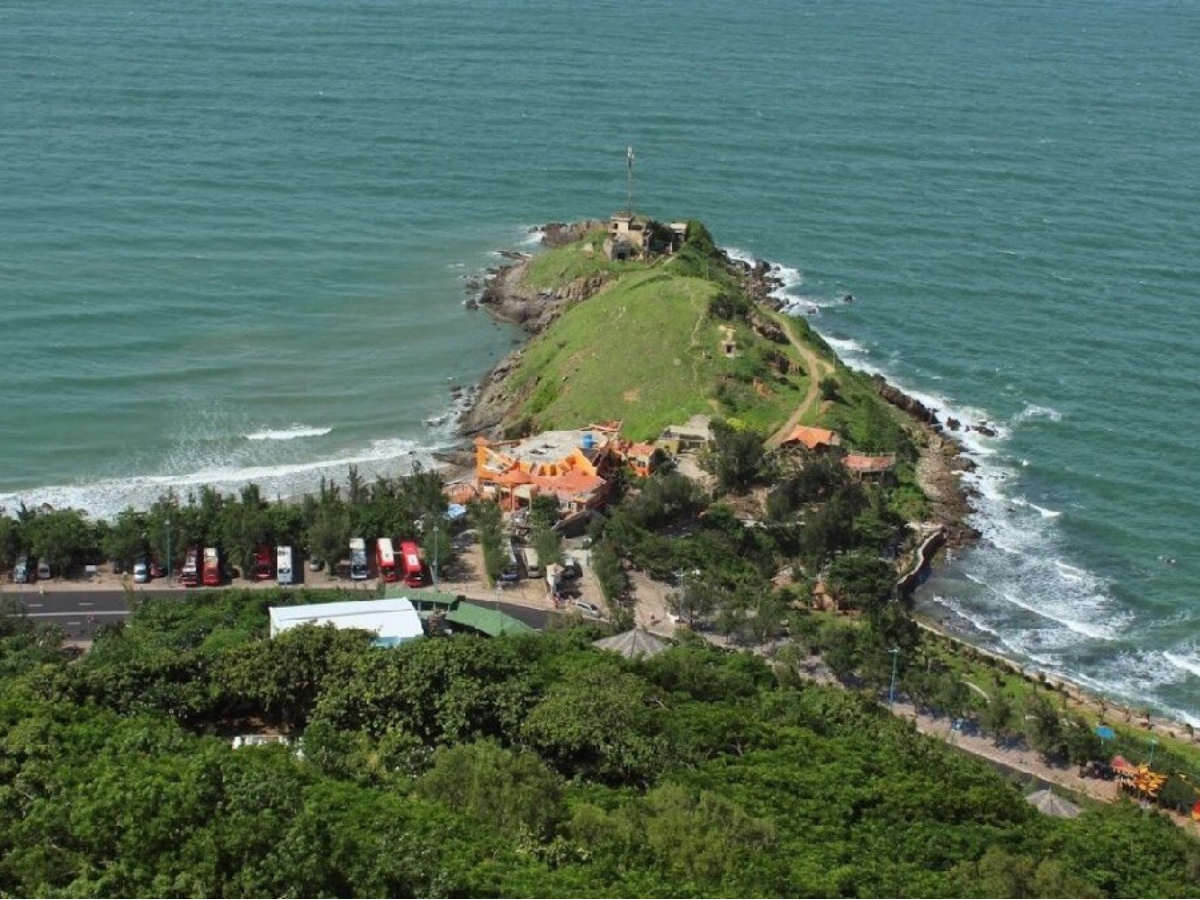
Located at the southern tip of the Vung Tau peninsula, Nghinh Phong Cape (also known as Cape Nghinh Phong or Cape Saint James) is a rocky headland that juts dramatically into the East Sea. Famous for its pristine scenery and remnants of French colonial military structures, this stunning spot invites visitors to explore its natural beauty and historical significance. This guide covers everything you need to know — from what the cape is and how to get there, to the best things to do and tips for an unforgettable visit.
What is Nghinh Phong Cape?
Nghinh Phong Cape, meaning “Cape of Welcoming Winds,” marks the southernmost point of Vung Tau City, Vietnam. Locally called Cape Nghinh Phong, it was dubbed Cape Saint James (Cap Saint Jacques) by the French during the late 19th century, when they established military installations here. Today, traces of bunkers, cannons, and other fortifications remain scattered across the cape, adding a layer of intrigue to this natural landmark.
Rising above the cape is Nui Nho (Little Mountain), crowned by the iconic Christ of Vung Tau statue. From this vantage point, visitors can enjoy sweeping views: the endless blue of the South China Sea to the south and the urban shoreline of Vung Tau to the north. The cape’s rugged topography also creates two small bays — Vong Nguyet Bay and Huong Phong Bay — each framed by jagged rock shelves perfect for rock-pooling and photography.
Where is Nghinh Phong Cape Located?
Nghinh Phong Cape lies in the coastal city of Vung Tau, at No. 1 Ha Long Street, Ward 2, Ba Ria-Vung Tau Province, southern Vietnam. The cape extends boldly into the East Sea, dividing the water into two tranquil bays. Each bay has its own unspoiled beaches known for their serene beauty.
The cape sits at the foot of Small Mountain (Mount Tao Phung), beneath the towering Christ of Vung Tau statue — one of the city’s most recognizable symbols. Despite being only about 2 km from the city center, the cape retains a wild, untouched charm. Stepping onto its windswept cliffs feels like entering another world, where the rustling waves and salty sea breeze create a soothing escape from urban life.
How to Get to Nghinh Phong Cape
Traveling from Ho Chi Minh City to Vung Tau
To reach Nghinh Phong Cape, first make your way to Vung Tau from Ho Chi Minh City. You have several options:
- By car or motorbike: A flexible choice, offering scenic drives along coastal routes. Travel time is roughly 3–4 hours, depending on traffic.
- By bus: Numerous bus companies operate routes between Ho Chi Minh City and Vung Tau, taking around 2–3 hours.
- By speed boat: High-speed hydrofoils are the fastest option, reaching Vung Tau in about 1.5 hours.
Getting to Nghinh Phong Cape within Vung Tau
Once in Vung Tau:
- Start at the Vung Tau War Memorial Statue.
- Follow Le Hong Phong Street towards Back Beach (Bai Sau).
- Turn onto Thuy Van Street, continuing along the scenic coast toward the Christ of Vung Tau statue.
- Look for the walkway leading up to the Christ statue.
- Across from this walkway, find stone steps heading down toward the sea.
- Follow these steps to reach Nghinh Phong Cape (Cape Saint James).
Things to Do at Nghinh Phong Cape
Nghinh Phong Cape offers a wealth of experiences for nature lovers, history buffs, and adventurers alike:
1. Witness Stunning Sunrises and Sunsets
With an unobstructed view of the horizon, the cape is perfect for catching sunrise or sunset. Morning skies glow in soft pastels, while evenings blaze with fiery reds and golds — ideal for photographers or moments of quiet reflection.
2. Explore French Military Relics
Scattered across the cape are the remains of French-era fortifications, including a lighthouse built around 1890, gun emplacements, and underground bunkers. History enthusiasts will enjoy imagining life at this strategic outpost. Near the Vung Tau Lighthouse lies an abandoned bunker, adding to the cape’s historic charm.
3. Try Rock Fishing
The cape’s rocky seabed and steady breezes make it a popular spot for rock fishing. Anglers often catch snapper, mackerel, and grouper, especially during the dry season from November to April.
4. Go Camping and Enjoy a BBQ
Adventurous visitors can camp overnight on flat rock plateaus. Small tents fit comfortably here, and portable grills make beachside barbecues unforgettable. There are no established campsites, so bring your own supplies and carry out all trash. The cape can accommodate around 10 medium-sized tents — perfect for small groups seeking a unique outdoor experience.
5. Snap Photos at the “Sky Gate”
A narrow trail between Vong Nguyet and Dua Bays leads to a natural rock archway known as the “Sky Gate.” This stunning spot frames ocean views and is a favorite Instagram hotspot. The trail requires only a short, easy scramble.
Beyond these highlights, visitors can enjoy hiking around the cape for broader views of the surrounding sea and coastline. While it’s not suitable for swimming due to deep waters, rocks, and currents, the cape remains an excellent place for relaxation and scenic ocean views.
Tips for Visiting Nghinh Phong Cape
- Timing: Visit early in the morning or late afternoon for the best light and cooler temperatures. Midday heat can make rocky paths slippery and tiring.
- Footwear: Wear sturdy, closed-toe shoes for navigating rugged trails.
- Supplies: Carry at least two liters of water per person, plus snacks, as there are no shops beyond the main road.
- Camping Gear: If camping, motorbikes make it easier to transport gear, but drive cautiously on dusty, uneven roads.
- Lighting: Bring a flashlight or headlamp if staying past sunset.
- Respect Heritage: Don’t climb on fragile ruins, remove artifacts, or leave trash. Help preserve the cape’s untouched charm.
- Check Weather: November to April is usually calmest, but always check conditions before your trip.



